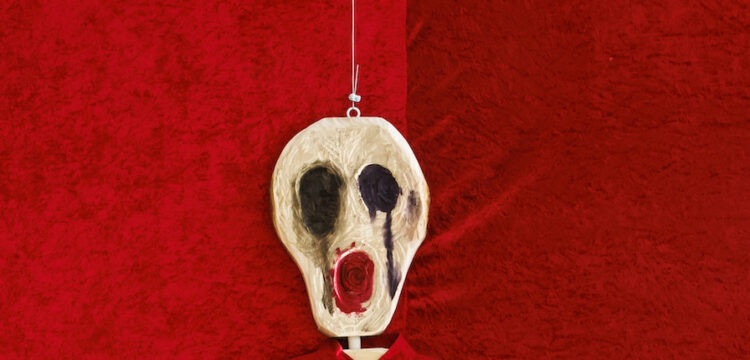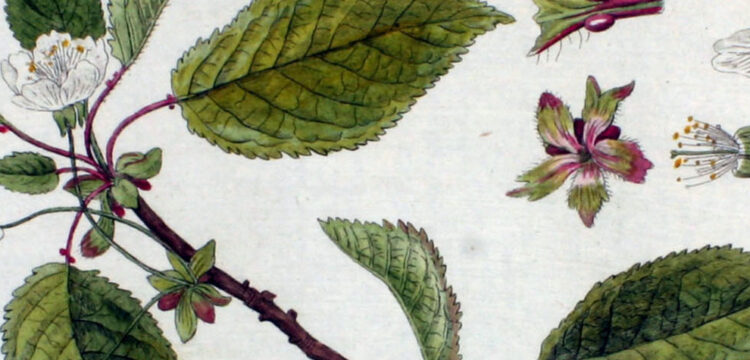Daisyworld
A conversation with Nona Inescu
Daisyworld is a solo exhibition by Nona Inescu, presented at Brooke Benington in London. The exhibition brings together a series of sculptures, installations, and photographs that delve into Inescu’s ongoing exploration of non-human agency, with a particular focus on plants and the intricate web of relationships that link them to human activities. Through her work, Inescu extends her interest in the ways living organisms, including plants, engage with the world beyond the human sphere, creating a dialogue that challenges anthropocentric views of nature.
At the heart of Daisyworld is a critical engagement with the theories of James Lovelock and Lynn Margulis, specifically their concept of Earth as a self-regulating ecosystem—a notion central to the Gaia hypothesis. Inescu draws from this idea to envision a world where the rigid hierarchies imposed by the Anthropocene are questioned, and where the boundaries between human and non-human, natural and artificial, begin to blur. In doing so, her art opens up a space to reconsider our role within the planet’s broader ecosystem, encouraging viewers to reflect on their own relationship with the environment. The exhibition suggests a vision of coexistence that is based on symbiosis rather than dominance, and where human beings are not the central architects of the world but participants in a larger ecological system.
Inescu’s sculptures and installations often blur the line between organic and artificial, merging natural materials with synthetic ones to create hybrid forms that seem both familiar and alien. These forms evoke a sense of transformation, as if they exist in a state of flux between different modes of existence, reflecting the ongoing changes in the natural world. Her photographs, on the other hand, capture moments of tension and harmony between human and non-human entities, emphasizing the delicate balance that sustains life on Earth.
Daisyworld is a call to reflect on the interconnectedness of all life forms and to envision a future where human and non-human agents are equal collaborators in shaping a shared, interdependent reality. By engaging with these complex ideas, Inescu encourages us to move beyond the limitations of the Anthropocene and toward a more holistic understanding of our place in the world.
Davide Tolfo: I would like to start this conversation by focusing on the title of your exhibition, Daisyworld. The title references a speculative mathematical model created by James Lovelock and Andrew Watson in response to critiques of the Gaia hypothesis, which Lovelock introduced in his 1979 classic Gaia: A New Look at Life on Earth. Critics of the hypothesis argued that Lovelock implied a collective will among Earth’s organic and inorganic entities, working together to form a self-regulating system. To address these critiques and support the Gaia theory, Lovelock and Watson developed Daisyworld, a hypothetical planet-ecosystem inhabited by just two types of daisies—black and white. These daisies, under regular nightly rainfall, either reflected or absorbed light based on their color, keeping the planet’s surface temperature stable despite solar fluctuations.
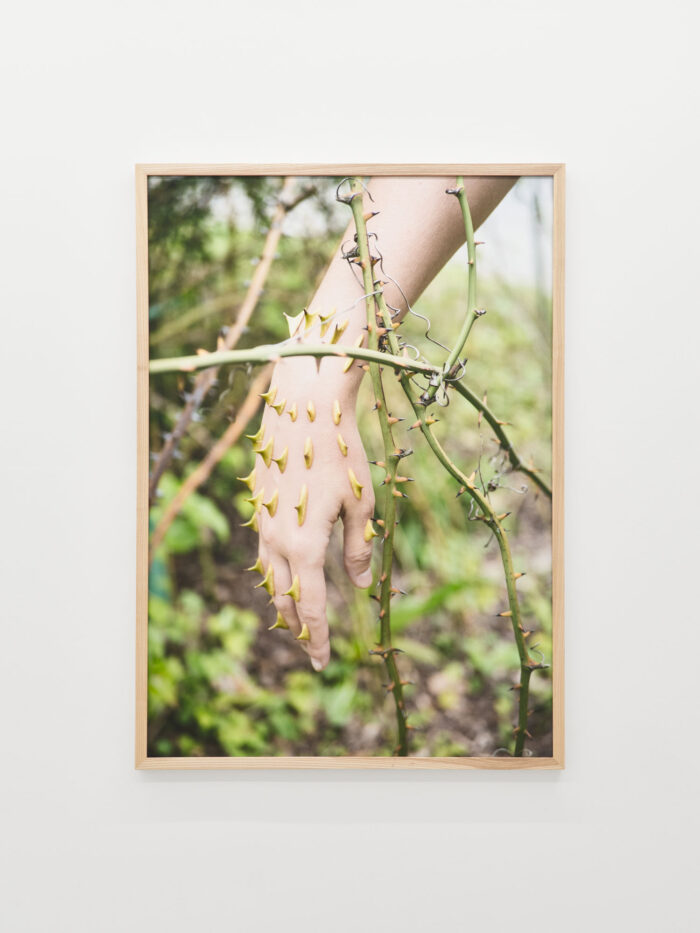
What I find intriguing is that the same criticisms aimed at the Gaia hypothesis, which led to the creation of this model, are often directed at theorists, designers, and artists whose work suggests a kind of revived animism, in which non-human agents are indirectly given anthropocentric qualities. In contrast, in the works featured in your exhibition, human subjects are not central, though their presence is subtly felt through its effects. This leaves open the question of whether we are witnessing a future world still dealing with the aftermath of human influence or the beginning of a new era where human and non-human agencies coexist.
Nona Inescu: I am more inclined to adopt the second vision for the future. I find it rather optimistic. What draws me to the Daisyworld speculative model (besides the graphic visualization of this model which I find very beautiful) is the underlying idea that a planet can be a self-regulating organism. For instance, I see mutant daisies’ actual presence or existence in places like Fukushima or Chornobyl as proof of the planet’s capability to restore and evolve even the most brutally scarred and damaged ecosystems. Could this potentially be an illustration of the model proposed by Lovelock? I also recognize that plants and animals have agency through their evolutionary traits and defense mechanisms, such as thorns or toxicity. I know this is the very definition of animism. Still, for me, it’s important to try and find ways to incorporate these elements into my work and propose a non-hierarchical non-anthropocentric view of the planet. Perhaps a new era where human and non-human agencies coexist is not a far-fetched Sci-Fi idea. I believe it’s still possible to envision. Coming back to animism, during my time spent in Indonesia earlier this year, I was in awe of the reverence and respect that people had for the land, the trees, and all the non-human inhabitants, which were considered holy. A revived animism and a return to rituals could prove essential to this future coexistence.
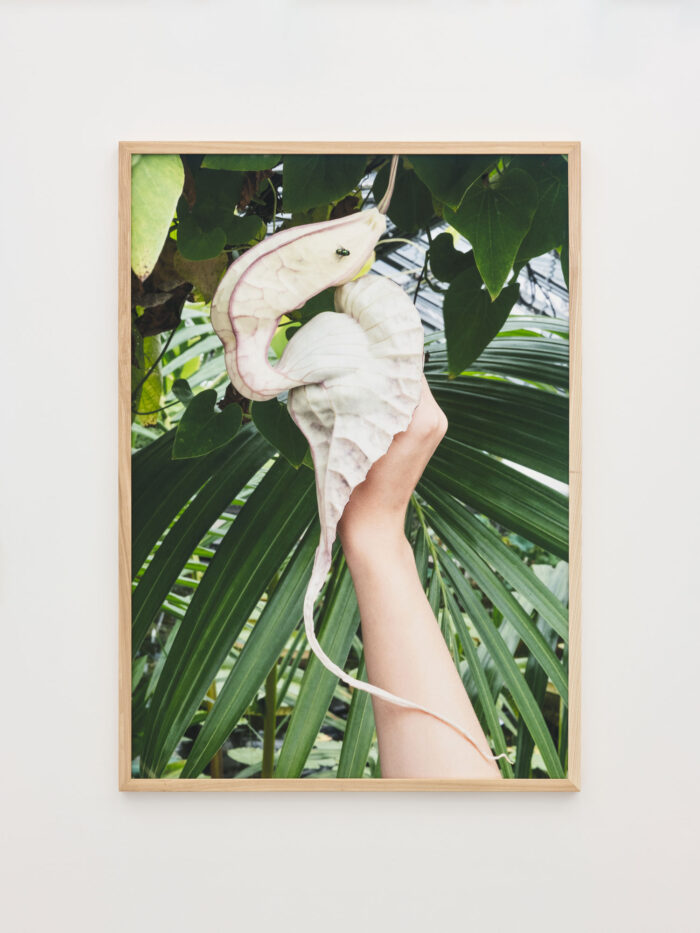
Davide Tolfo: Your reference to mutated—and mutating—daisies brings me to another reflection. In your response, you mentioned Common Daisy (Bellis perennis), a work featuring brass sculptures inspired by specimens found in areas affected by nuclear disasters, such as Fukushima and Chernobyl. The deformations of these plants, immortalized in brass, seem to push beyond a purely aesthetic understanding of what we consider “natural”. Rather than merely looking back and witnessing the rupture of a previous, unspoiled state through these malformations, I see these hybrid forms as ongoing examples of natural-cultural entanglements that continue to evolve. They force us to confront the complexities of what is “natural” in the present moment, where human influence is inextricably linked to environmental change. How do you see this dynamic at play in your work?
Nona Inescu: Natural-cultural entanglements have been central to my artistic practice from its inception, along with an ongoing fascination with mutations, anomalies, and curiosities. In the Common Daisy (Bellis perennis) series, these entanglements become particularly evident. The production process—3D modeling, 3D printing, and metal casting—creates an interesting tension between human intervention and the autonomy of materials and machines. Although the human hand is minimally involved and the processes are largely automated, the outcome is never fully predictable. Even with identical 3D prints, no two brass daisies in the series are exactly the same; each possesses subtle variations in size and form, mimicking the uniqueness of natural organisms. This unpredictability reinforces the idea that there is no real division between nature and culture. What begins as an exploration of nature (the daisy) moves into the realm of culture through artistic intervention, yet retains elements of chance and unpredictability—qualities we often attribute to the natural world. In this sense, the work embodies a “natural” process within a “cultural” framework, highlighting how human influence and natural phenomena are inextricably linked. The sculptures, like the hybrid forms found in environments altered by human activity, challenge traditional notions of what is “natural,” urging us to reconsider how we define and engage with both nature and culture.
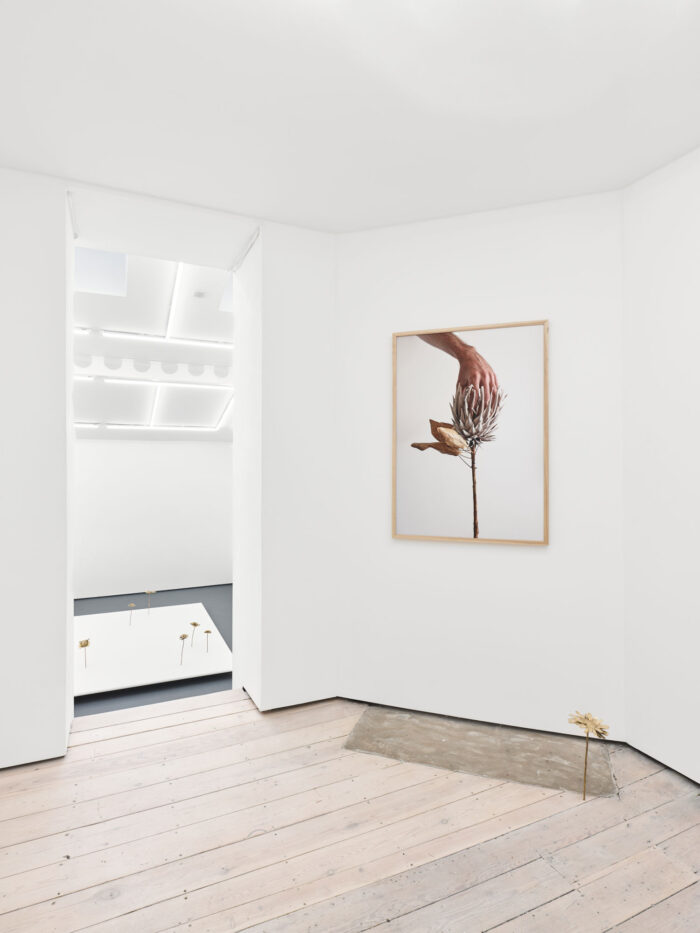
Davide Tolfo: What I found particularly interesting is that the human body in your exhibitions is confined solely to the photographic works. In these images, a hand is shown blending with its natural surroundings, coming into contact with various flowers and plants, and in some instances, almost merging with them. For example, in Brugmansia, Angel’s Trumpet, and Protea, the hand appears to be absorbed by the plant, as though it is being enveloped by it. However, in Aristolochia, the hand takes on a more supportive role, acting as a base or structure for the plant. Meanwhile, in Rosa Canina, the hand seems to fuse with the plant’s body, forming a new hybrid entity. What was the reason behind choosing the hand as the central element in these works? Is there a relationship between these different human-plant interactions and connections?
Nona Inescu: The hand in my works functions as a bridge between the human and natural worlds, embodying the intimate connection and interdependence between the two. I chose the hand as the central element because of its universality—it’s a part of the body that actively engages with the environment, symbolizing both agency and vulnerability. In these images, the hand represents a tactile exploration of nature, highlighting how humans interact with, influence, and are shaped by their natural surroundings.
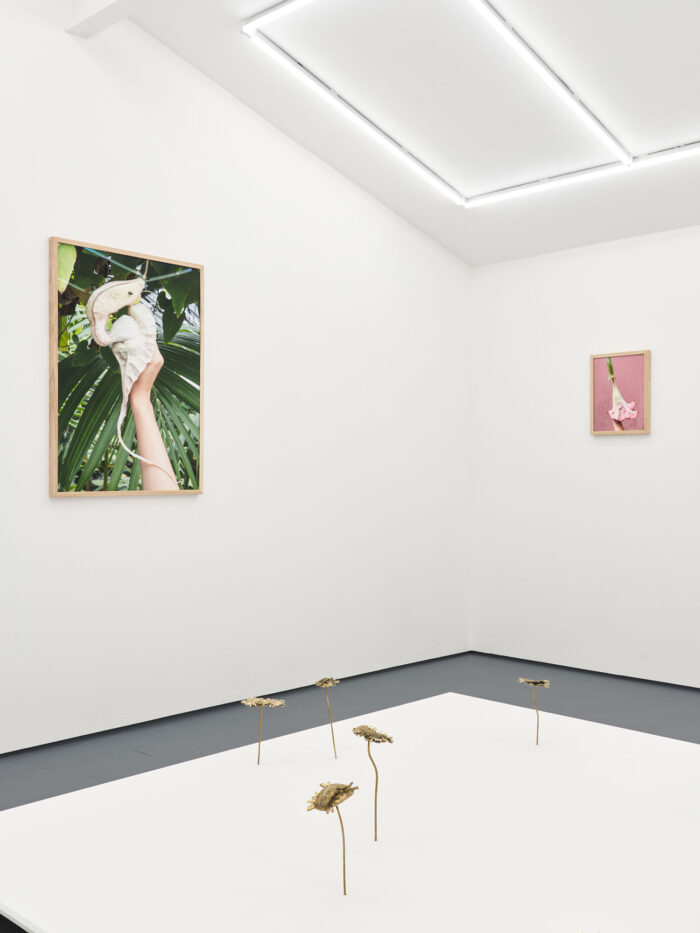
The varying interactions in each photograph illustrate different dimensions of this relationship. In Brugmansia, Angel’s Trumpet, and Protea, the hand seems to dissolve into the plant, suggesting a blending or submission to nature. This could suggest the idea of humans becoming enveloped by the natural world, losing the boundaries that traditionally separate us from it. In Aristolochia, the hand takes on a more structural role, supporting the plant as though acknowledging the interdependence between humans and nature. This interaction speaks to how humans can act as caretakers, but also as structures within its systems. Maybe it’s worth mentioning that this photograph was taken in a Botanical Garden, further emphasizing this dynamic. In Rosa Canina, the merging of the hand with the plant creates a hybrid entity, suggesting a symbiotic relationship where humans and plants are no longer separate, but part of the same evolving form. This fusion reflects my ongoing exploration of the natural-cultural entanglement, where nature and humanity are inextricably linked and continuously shape one another. Each photograph from this series emphasizes the fluidity between human and plant forms, challenging the notion that they exist as distinct, disconnected entities.
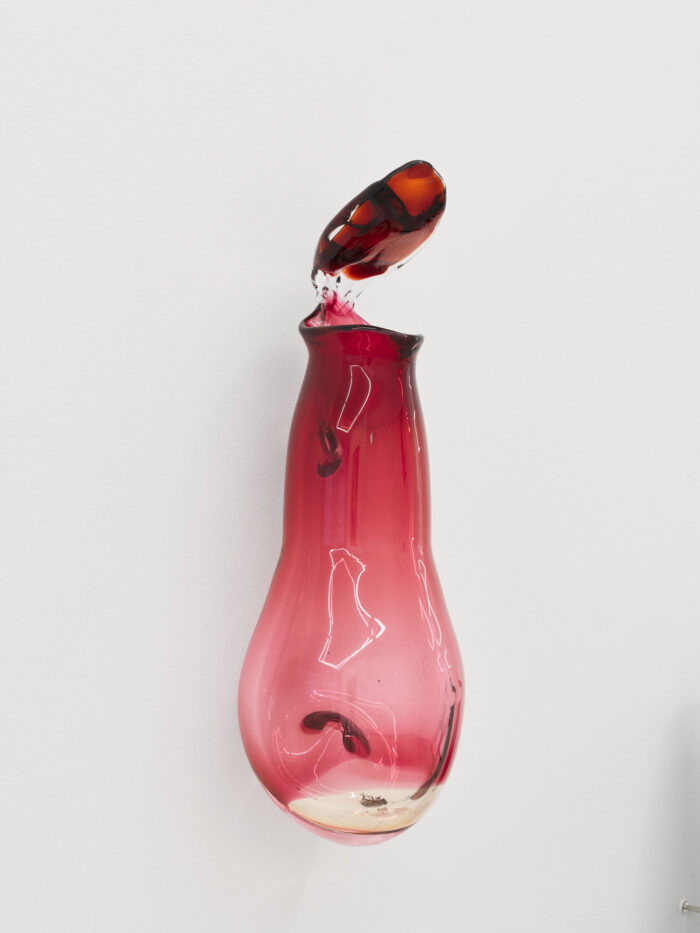
Davide Tolfo: Speaking about your research, I’d like to shift the focus of this final question to your future and ongoing projects. There’s a very strong thread connecting your past exhibitions and projects to Daisyworld, which highlights how your exploration of plant agency and bodies has not only evolved but remains at the core of your artistic practice. From the iron sculptures featuring native dried thistles displayed at Palermo Botanical Garden through the ZACentrale project (Fondazione Merz) to the hand-blown glass Nepenthes carnivorous plants showcased in Daisyworld, your choice of materials seems to be strongly guided by the unique qualities of each selected plant or flower. This creative blend of the organic and inorganic, as you’ve previously mentioned, creates a fascinating hybrid. As your artistic journey continues to move, I’m curious how this balance between nature and sculpture might develop further. Are there any particular aspects of your research that you are interested in further exploring or specific directions you envision pursuing in your upcoming projects?
Nona Inescu: While plant agency has always been central to my work, I’m currently noticing a shift in my focus, broadening to encompass whole landscapes and ecosystems rather than just individual species. This shift allows me to explore the interconnectedness of environments and how they shape vulnerable bodies—human and more-than-human— while still maintaining my focus on preservation, decay, aging and transformation.
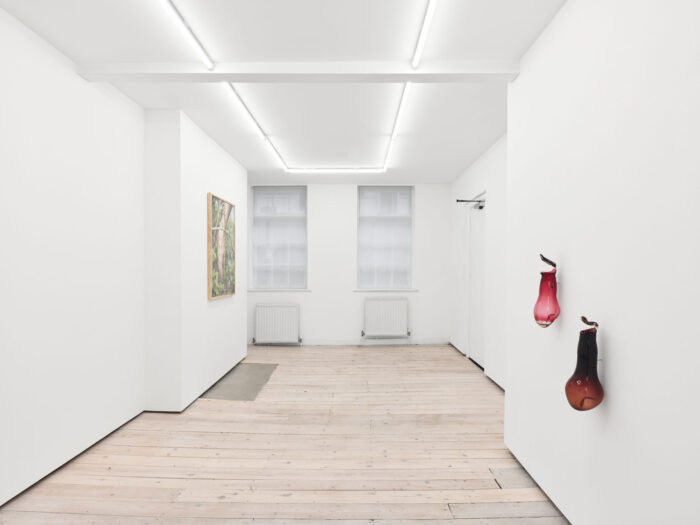
In recent years, this broader approach began with my Reliquaries series (2022), continued with the exhibition Grey Gardens (2023), and most recently took shape in my Preservers sculptures. My upcoming projects will expand on these themes, with a particular focus on the fragility of ecosystems. For instance, my next exhibition may be my darkest yet, as I plan to incorporate the devastating effects of wildfires, reflecting on the transformation they impose on landscapes and life alike. Despite this darkness, I intend to leave room for hope—something that lingers in the ashes and carries the possibility of regeneration.


